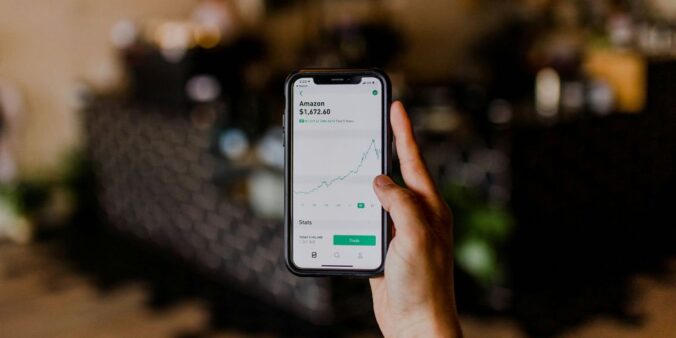The cryptocurrency market has been a topic of intense debate, with investors wondering whether we are in the midst of a crypto bubble that is destined to burst. Some argue that cryptocurrencies are here to stay and will continue to appreciate, while others believe the market is overheating and a crash is imminent. In this article, we will answer the question of what a crypto bubble is, examine some indicators that signal whether a bubble exists at all, and discuss possible exit strategies for concerned investors.
Key Takeaways
- Rapid price increases and high volatility are major warning signs of a crypto bubble.
- Investor behavior, such as speculative investments and herd mentality, plays a crucial role in forming bubbles.
- Financial indicators like market sentiment analysis and liquidity can signal an impending bubble.
- Diversification and setting stop-loss orders are effective strategies for navigating a potential crypto bubble.
- Learning from past market bubbles, such as the Dot-Com and Housing bubbles, can provide valuable lessons for crypto investors.
Understanding the Concept of a Crypto Bubble

Defining a Crypto Bubble
A crypto bubble occurs when the prices of cryptocurrencies like Bitcoin increase very rapidly due to a lot of excitement and investment from people hoping to make quick money. This speculative frenzy often leads to prices skyrocketing beyond their intrinsic value. Investors’ fear of missing out (FOMO) and hype-driven irrational exuberance are key drivers of this phenomenon.
Historical Examples of Market Bubbles
Market bubbles are not unique to the crypto market. Historical examples include:
- The Dot-Com Bubble (late 1990s)
- The Housing Bubble (2008)
These events were characterized by rapid price increases followed by significant market corrections.
Why Bubbles Form in the Crypto Market
Crypto bubbles form due to several factors:
- Speculative investments
- Herd mentality
- Fear of missing out (FOMO)
These elements create an environment where prices can inflate rapidly, leading to unsustainable growth and eventual market corrections.
Key Indicators of a Crypto Bubble
Rapid Price Increases
One of the most evident signs of a crypto bubble is rapid price increases. When you notice that crypto prices are climbing rapidly and reaching new highs frequently, it is a strong indicator. This often happens without clear fundamentals to support such movements, making it a speculative behavior.
High Volatility
High volatility is another key indicator. Prices change dramatically in a short period, reflecting the unstable nature of the market. This extreme price fluctuation is often driven by speculative investments and can be a precursor to a market correction.
Surge in Trading Volumes
A sudden increase in trading volumes can also signal a crypto bubble. When there is a surge in buying and selling activities, it often indicates that a large number of investors are entering the market, driven by the fear of missing out (FOMO). This can lead to inflated asset prices and an eventual market correction.
Financial indicators serve to convey many messages about investor behavior and overall market sentiment. Therefore, as the crypto market is constantly evolving, it’s important to be alert to what certain financial indicators are trying to tell us in case of potential bubble signs.
The Role of Investor Behavior in Crypto Bubbles
Speculative Investments
Speculative behavior plays a significant role in inflating crypto bubbles. Many investors buy into cryptocurrencies not because of their intrinsic value or utility, but with the hope of selling them later at a higher price to make a profit. This speculative nature can drive prices far beyond their fundamental values, creating a precarious market situation.
Herd Mentality
A sudden influx of new investors, driven primarily by the worry of missing out on potential profits, floods the market during a crypto bubble. This increased demand causes prices to soar, often far beyond what the underlying technology or asset is actually worth. As the bubble continues to inflate, more and more investors join in, fueling the frenzy and creating a self-perpetuating cycle.
Fear of Missing Out (FOMO)
Fear of Missing Out (FOMO) is a powerful driver in the crypto market. Investors, afraid of missing potential gains, rush to buy assets, further inflating prices. This behavior is often observed during rapid price increases and can lead to irrational investment decisions.
It is important for investors to be cautious as these bubbles eventually burst, leading to a sharp decline in asset values.
Financial Indicators Signaling a Crypto Bubble

Market Sentiment Analysis
Market sentiment analysis involves gauging the overall attitude of investors towards a particular asset or market. Positive sentiment can drive prices up, while negative sentiment can lead to a sell-off. Tools like sentiment analysis algorithms and social media trends can provide insights into whether the market is overly optimistic or pessimistic.
Price-to-Earnings Ratios
Price-to-Earnings (P/E) ratios are a common metric used to evaluate whether an asset is overvalued or undervalued. In the crypto market, extremely high P/E ratios may indicate that prices are inflated beyond the asset’s actual value. This can be a red flag for a potential bubble.
Liquidity and Market Depth
Liquidity and market depth are crucial indicators of a healthy market. High liquidity means that assets can be bought or sold without causing significant price changes. Conversely, low liquidity can lead to extreme price fluctuations. Monitoring the order book and trading volumes can help assess the market’s liquidity and depth.
Financial indicators serve to convey many messages about investor behavior and overall market sentiment. Therefore, as the crypto market is constantly evolving, it’s important to be alert to what certain financial indicators are trying to tell us in case of potential bubble signs.
Strategies for Navigating a Potential Crypto Bubble

Diversification
Diversification is a fundamental strategy to mitigate risks associated with a potential crypto bubble. By spreading investments across various cryptocurrencies such as Bitcoin, ethereum, and solana, investors can reduce the impact of a significant price drop in any single asset. This approach not only helps in managing risk but also provides exposure to different segments of the crypto market.
Setting Stop-Loss Orders
Implementing stop-loss orders is a proactive measure to protect investments from drastic losses. A stop-loss order automatically sells a cryptocurrency when its price falls to a predetermined level, thereby limiting potential losses. This strategy is particularly useful in a highly volatile market, where prices can plummet rapidly.
Long-Term Investment Perspective
Adopting a long-term investment perspective can help investors navigate the uncertainties of a crypto bubble. Instead of reacting to short-term market fluctuations, focusing on the long-term potential of cryptocurrencies can lead to more stable returns. This approach requires patience and a thorough understanding of the underlying technology and market trends.
Preparing yourself as an investor capable of making sound financial decisions, rather than being driven by speculation and FOMO, will allow you to test the hype’s validity.
Lessons from Past Market Bubbles

The Dot-Com Bubble
The dot-com bubble of the late 1990s is a classic example of a market bubble. During this period, investors poured money into internet-based companies, driving their stock prices to unsustainable levels. When the bubble burst, many of these companies went bankrupt, leading to significant financial losses.
The Housing Bubble
The housing bubble of the mid-2000s was characterized by a rapid increase in housing prices, fueled by speculative investments and easy access to credit. When the bubble burst, it triggered a global financial crisis, highlighting the dangers of excessive speculation and leverage in the real estate market.
Lessons for Crypto Investors
Investors can learn valuable lessons from past market bubbles:
- Recognize the signs: Rapid price increases, high volatility, and a surge in trading volumes are common indicators of a bubble.
- Diversify investments: Spread investments across different asset classes to mitigate risk.
- Implement risk management strategies: Use stop-loss orders and maintain a long-term investment perspective.
Understanding the history of market bubbles can help investors navigate the crypto market more effectively, balancing the potential for high rewards with the need to protect against significant losses.
The history of market bubbles offers invaluable lessons for today’s investors. By studying past events, we can better understand the signs of an impending bubble and take steps to protect our investments. For more insights and detailed analysis, visit our website.
Conclusion
In conclusion, the cryptocurrency market is a dynamic and rapidly evolving space that can present both significant opportunities and substantial risks. Recognizing the signs of a potential bubble—such as rapid price increases, high volatility, and large trading volumes—can help investors make more informed decisions. While some believe that cryptocurrencies are here to stay and will continue to grow, others caution that the market may be overheating and a crash could be imminent. By staying vigilant and understanding the key indicators of a bubble, investors can better navigate the complexities of the crypto market and protect their investments.
Frequently Asked Questions
What is a crypto bubble?
A crypto bubble occurs when the prices of cryptocurrencies rise far above their intrinsic values, often driven by speculative investor behavior. These bubbles typically end with significant price declines.
What are the key indicators of a crypto bubble?
Key indicators include rapid price increases, high volatility, and a surge in trading volumes. These signs suggest that the market might be overheating.
How does investor behavior contribute to crypto bubbles?
Investor behavior such as speculative investments, herd mentality, and fear of missing out (FOMO) can contribute to the formation and growth of a crypto bubble.
What financial indicators signal a potential crypto bubble?
Financial indicators like market sentiment analysis, price-to-earnings ratios, and liquidity and market depth can signal a potential crypto bubble.
What strategies can help navigate a potential crypto bubble?
Strategies include diversification, setting stop-loss orders, and maintaining a long-term investment perspective to mitigate risks associated with a potential crypto bubble.
What lessons can be learned from past market bubbles?
Lessons from past bubbles, such as the Dot-Com Bubble and the Housing Bubble, highlight the importance of recognizing speculative behavior and the risks of overvaluation. These lessons can be applied to the crypto market as well.



Leave a Reply